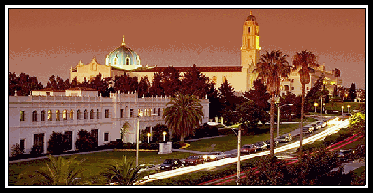
ENVIRONMENTAL AND NATURAL RESOURCE ECONOMICS
 |
| Fall 2019 |
 |
Economics 308 ENVIRONMENTAL AND NATURAL RESOURCE ECONOMICS |
|
|
|
| | HOME | SYLLABUS | CALENDAR | ASSIGNMENTS | ABOUT PROF. GIN | |
Consider the case of Alantown, a rapidly growing city of (x),000 people located on the Alan River. The city's economy is based on light industry, a state university, financial services, and tourism. The city's rapid growth has strained it's sewer capacity, and, as a result, a stretch of the Alan River near the city has become seriously contaminated. Not only is there a health concern, but the city’s economy has also been impacted. While the labor market remains strong with an unemployment rate of only 2.5%, people who used to drive from miles away to visit the Alan River have stopped coming. The city hopes to apply for some federal funds to help deal with the situation, but a benefit-cost analysis is needed that shows that the project is justified. The information below may or may not be helpful:
1. Alantown has a sister city named Ellentown, which is identical in all respects except for the contamination of the river.
2. Alantown’s current sewage treatment plant was designed for a population of 35,000 people. It is looking to upgrade the facility to increase its capacity to provide service for a population of up to 150,000 people. The facility will cost $25 million to upgrade, which must be paid upfront. The upgrade will take two years to complete and is expected to be adequate for a period of 25 years. Because it is more sophisticated, operating and maintenance costs will increase by $500,000 a year.
3. The illnesses that are likely to result from the contaminated water are difficult to track, as many people will rely on over-the-counter remedies to deal with the symptoms. There have not had any noticeable increase in visits to public health facilities due to gastro-intestinal problems. However, the health problem is serious, as evidenced by a study that found that deaths due to gastro-intestinal problems could be reduced from the current rate of 1 in 100,000 to 1 in 250,000 if the contamination problem was dealt with.
3. An analysis of wages in Alantown in comparison to Ellentown showed that, when experience, education, and type of industry is taken into consideration, there is no difference in wages between the two cities.
4. An hedonic pricing model to determine the possible effects of the problems with the Alan River. There is one single family housing unit for every eight residents of the city. Housing sales in both Alantown and Ellentown were compared, using the following regression model:
House price = b0 + b1*Square footage + b2*Age + b3*Dummy variable for Alantown
Since Alantown and Ellentown are identical except for the state of the Alan River, the coefficient for the dummy variable (b3) must capture the impact of the contamination (odor, illness, etc.) for similar houses. The value of b3 is estimated to be -$400 and the coefficient is statistically significant.
5. The Alantown Tourism Bureau
conducted a survey about tourism on the
6. The Tourism Bureau estimated
that there is a 50% chance that tourism will return to its previous level, a 30%
chance that tourism will be less than the previous level, and a 20% chance that
it will be more than the previous level.
7. The data on where the users came from was used to estimate, using the travel-cost method, the use of the river at different prices for the three possibilities discussed in item 6 above. The results are summarized in the table below:
| Zone | Population | Travel Cost | Per Capita Use (Pessimistic) | Per Capita Use (Previous) | Per Capita Use (Optimistic) |
| 1 | (x),000 | $0 | 0.50 | 0.60 | 1.00 |
| 2 | 100,000 | $5 | 0.25 | 0.45 | 0.80 |
| 3 | 150,000 | $10 | 0.00 | 0.30 | 0.60 |
| 4 | 200,000 | $15 | 0.00 | 0.15 | 0.40 |
| 5 | 300,000 | $20 | 0.00 | 0.00 | 0.20 |
| 6 | 500,000 | $25 | 0.00 | 0.00 | 0 |
8. Once the river is in use again, an extra $200,000 a year in expenses will be incurred (maintenance, security, etc.).
Your assignment is to conduct a benefit-cost analysis for this situation and submit a report on your findings. The report should be typed on 8 1/2 by 11 paper, or can be submitted by e-mail. The assignment is due on Wednesday, November 13.
Use the table below to fill in the value for (x) above:
| Name |
(x) |
| Albinali | 51 |
| Boulineaux | 52 |
| Bridges | 53 |
| Caggiano | 54 |
| Clark | 55 |
| Doudera | 56 |
| Eslick | 57 |
| Evans | 58 |
| Garcia | 59 |
| Hagen | 60 |
| Haji | 61 |
| Hildebrandt | 62 |
| Houldin | 63 |
| Hughes | 64 |
| Jones | 65 |
| Lee | 66 |
| Lesley | 67 |
| Ohlendorf | 68 |
| Pesano | 69 |
| Raab | 70 |
| Saade | 71 |
| Sands | 72 |
| Sierra | 73 |
| Silva | 74 |
| Stolin | 75 |
| Tasca | 76 |
| Thompson | 77 |
| Truqui | 78 |
| Turnley | 79 |
| Ward | 80 |
| Wilderman | 81 |
| Zhang | 82 |
| Zhou | 83 |
| Zigmann | 84 |